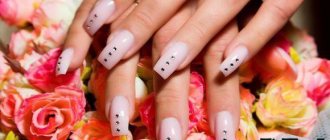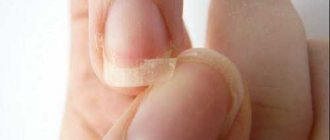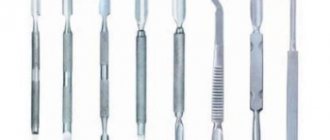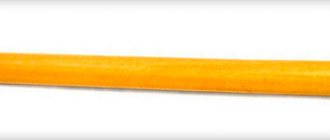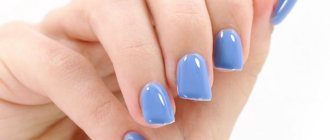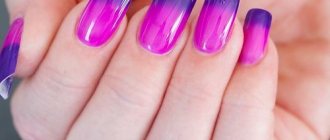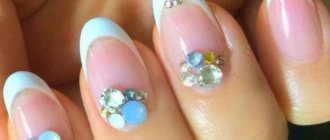Ultraviolet lamps have long been used to treat rooms in medical institutions. Later they began to be called bactericidal and used at home. Devices are often purchased by parents after the birth of a child to protect him from harmful microorganisms.
As interest in UV lamps grew, different types of devices began to appear that met the specific needs of buyers. For example, some devices used in hospitals are not suitable for use at home. You should consider the types of emitters, operating principles and purpose.
What is a UV lamp
An ultraviolet lamp is a device that emits artificial light that has bactericidal properties. The lamp emits part of the spectrum of sunlight - a neon purple glow is formed in the bulb. When the device is connected to the network, the mercury vapor inside the bulb begins to interact with electromagnetic discharges, emitting ultraviolet light.
Fig. 1 – UV irradiator.
Instead of mercury, cadmium, indium or bismuth is sometimes present inside the housing. The light emitted is in the range between X-rays and rays visible to the human eye. The UV lamp has the form of an elongated bulb, along the edges of which electrodes are installed that create a discharge to interact with mercury. Outwardly, it resembles a standard fluorescent lamp.
Manicure and gel polish
Just 8 years ago, no one had even heard of gel polish. With its appearance, the dream of many girls to have not only a beautiful but also long-lasting manicure has finally come true. Agree that not every representative of the fair sex has the opportunity to visit nail salons a couple of times a month. This is why many girls do their own manicure at home. A truly durable coating can only be achieved using gel polish. For its high-quality curing, a special lamp is required. In addition, the procedure for applying gel polish involves using a base and a “finish” on the nails. Each of these layers must also be polymerized (dried) in a UV or LED lamp.

Principle of operation
The operating principle of an ultraviolet lamp is almost identical to a quartz lamp. The main difference is that here, in most cases, special uviol glass is installed instead of quartz. It is necessary to filter aggressive UV radiation. Thanks to this, the device does not emit ozone, but only harmless soft ultraviolet light.

Inside the housing there are molybdenum current-carrying threads and electrodes in mercury vapor. The case is sealed and equipped with a durable base.
Nuances of choice
As you can see in the photo of the UV lamp, it is a compact box equipped with a control panel, ultraviolet lamps and a power cord. In addition, the design may include a fan and a timer.
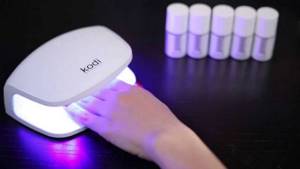
The purpose of application is to obtain a well-dried, high-quality decorative nail coating.

Today, a large number of models of UV lamps are produced, differing from each other - in power;
- by type of control panel;
- to size;
- according to the shape of the body;
- according to color design.

Speaking of power, this figure can vary from 9 W to 54 W. The control panel can be represented by a regular power button or a touch screen.
In terms of size, the device can be designed for two hands, one hand or one finger. Also separately distinguished is this type of modern UV lamps, such as pedicure lamps.
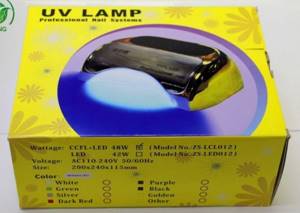
In addition, it should be noted that both household and professional UV lamps can be seen on sale. The latter are distinguished by higher power and price.

The lamps built into the body of the device are the main distinguishing feature of nail dryers. They can be UV or LED.
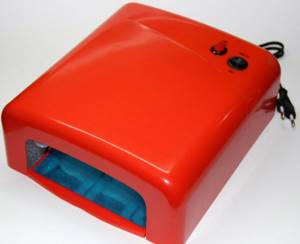
Varieties
Among existing UV emitters for disinfection, bactericidal and quartz lamps have become the most popular. In classical instruments, the flask is made of quartz glass. During operation, the device releases harmful ozone into the air.
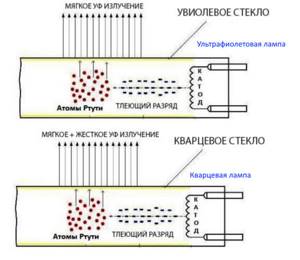
The main difference between a UV lamp and a quartz lamp is different glasses.
Such devices are more often used for treating medical and industrial premises, where a person does not necessarily need to be present at the time of treatment. A uviol glass flask is installed in the bactericidal emitters. Structurally, ultraviolet lamps are as follows:
- portable . Due to their compactness and light weight, they are widely used in everyday life. Used to treat toilets, tables, sinks and shoes;
- open . Kill pathogenic microbes in the air and on all surfaces. There should be no animals, people or plants in the room when the device is operating. Suitable for processing large spaces;
- closed . They are called closed-type recirculators. They are often used in everyday life, since processing can be carried out in the presence of a person. The lamp design includes a fan. It is necessary to draw air inside, where disinfection with ultraviolet rays occurs. Next, the purified air goes back into the room.
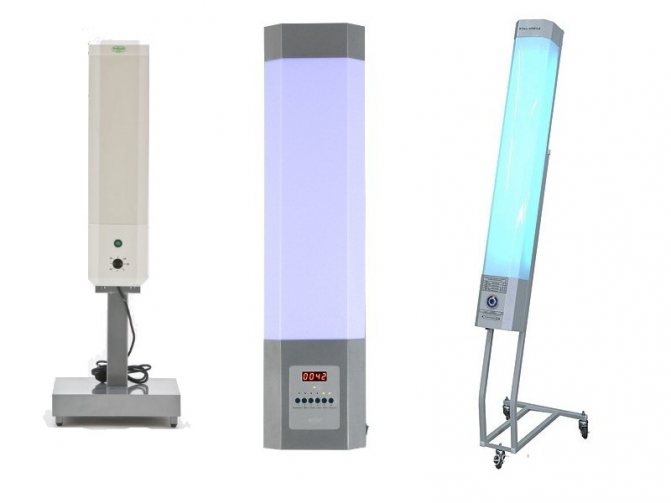
Fig. 3 – closed type lamps.
In addition to design differences, ultraviolet lamps are divided by type of installation. They can be:
- floor . Best suited for disinfecting large spaces. They are often placed in a corner of the living room, hallway, bedroom or nursery. Sometimes used to disinfect wardrobes;
- mounted _ Installed on the ceiling or wall. The lamp must be mounted only on a reliable mount. Thanks to the large number of shapes and colors, the device can be selected taking into account the design of the room. The devices are characterized by increased efficiency;
- desktop _ They usually have a laconic design and small size. Such models can be used in any room, regardless of whether there are people there or not.
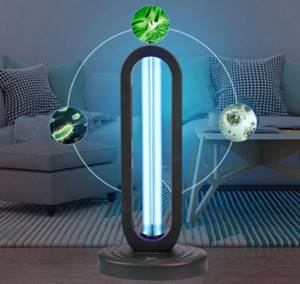
Fig. 4 – desktop UV irradiator.
Some models of ultraviolet color lamps are equipped with an automatic connection mechanism. If the disinfectant will be used at home, it is better to choose a portable model.
Other types of drying lamps
In addition to LED lamps and the very common UV lamps, gas-light lamps powered by CCFL lamps are used for drying nails, designing and polymerizing various artificial coatings. The light source in them is a special gas. These devices have been used relatively recently and have not yet found widespread use. They have a number of undeniable advantages, including:
- long operating hours of lighting elements, amounting to up to 80 thousand working hours;
- significant energy savings;
- slight heating of the device itself and the illuminated surface, thereby eliminating the possibility of cauterization of the gel or overheating of the skin of the hands;
- no harmful effects on eyes and skin.
More and more nail art experts are inclined to believe that the most suitable lamps for drying nails and the most advanced in terms of reliability and efficiency are the so-called hybrid devices. They are equipped with two types of working elements - LED and CCFL. When you turn on the device, the lamps light up simultaneously and thereby combine all the advantages of using separate devices of different types.
Thus, hybrid lamps can be used for polymerization of all types of gel polishes, acrylic or gel, if nail extensions and designs are being performed. In addition, the coatings dry very quickly and there is no burning or “twisting” of the gel, and the device does not heat up. Also, the process of drying nails using such a lamp does not harm your health and makes the coating very durable. Another important advantage of hybrid lamps is the independence of their service life from the number of on/off switches. The disadvantages include the high cost of the device and its low prevalence in the network of modern specialized stores in the beauty industry.

Ultraviolet lamp device
The ultraviolet lamp consists of the following elements:
- flask made of uviol or quartz glass;
- tungsten electrodes;
- metal base;
- molybdenum threads;
- coupling (ceramic);
- connector

Fig. 5 – design of an ultraviolet lamp.
What is it for?
Ultraviolet lamps are used:
- for medicinal purposes. For laryngitis, sinusitis, sinusitis, non-purulent otitis media, influenza and tonsillitis. In the midst of an epidemic, ultraviolet lamps are used as a bactericidal agent. Ultraviolet radiation therapy is not recommended for children under 3 years of age. But this is possible if the newborn has a mild form of liver dysfunction (manifested as jaundice). For a runny nose and sore throat, a model with a short wavelength is suitable. Often included are attachments;
- for water purification. The devices look like a tank with a lamp. The disinfector treats the liquid with rays, destroying harmful microbes. The output is clean and usable water. It is important to learn how to determine the amount of ultraviolet light needed for cleaning. In addition, you need to change the lamp when it begins to weaken;
- for plants. When they suffer from a lack of ultraviolet radiation, the issue can be solved with the help of a phytolamp. Artificial radiation will help ensure the process of photosynthesis, which is necessary for full development.

Fig. 6 – device for water purification.
What does ultraviolet lamp kill?
Thanks to ultraviolet rays, the device is able to kill dangerous viruses, bacteria (staphylococci, bacilli, enterococci), fungi (yeast and mold) and mold.
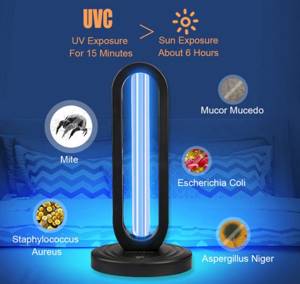
Fig. 7 – microorganisms susceptible to radiation.
The antibacterial effect is explained by the property of short-range ultraviolet rays (up to 280 nm). They are able to penetrate the DNA of pathogenic microorganisms and destroy it from the inside, preventing further reproduction.
Also read: Differences between a recirculator and a quartz lamp.
How to use a lamp correctly at home
It is believed that ultraviolet radiation, even in minimal quantities, can be harmful to health. When using a disinfection device, you must adhere to safety precautions. Rules for using the disinfectant:
- the bactericidal device should be turned on only if there are no people in the room and only for the period of time specified in the instructions;
- If you need to treat any parts of the body with ultraviolet light, you need to make sure that the device is intended for these purposes. Before turning on, you should put on special glasses (often they are included) and close your eyes. It is also worth adhering to the recommended mode, distance to the lamp and treatment time;
- If a spectrum “C” lamp was used, it is necessary to ventilate the room after the procedure. This is necessary to remove accumulated ozone;
- When using a household recirculator, just in case, you should make sure that it is truly ozone-free. If this is not the case, you cannot turn it on in the presence of people in the room.

Fig. 8 – areas of application of recirculators.
Is there any harm from a nail lamp?
Many women wonder whether a nail drying lamp is harmful. Often, concerns can discourage a user from purchasing a dryer or visiting a nail salon. Fears for your health are far from unfounded. The question arose when the story of two women who were diagnosed with skin cancer was widely publicized. They both used UV nail dryers frequently. However, in a subsequent study of a larger sample of patients, no such deviations were identified. From which we can conclude that the occurrence of such diseases can be attributed to a special case and characteristics of the body, and not to the potentially harmful effects of UV rays.
Some experts continue to argue that even more intense exposure to UV rays on human skin and eyes is completely safe, and in some cases even beneficial. Of course, even with a minimal probability of developing terrible diseases, some people will experience justified fears.
To minimize negative consequences, doctors recommend using a dryer at a certain interval: do not change the nail polish more than once a week. This intensity can be hazardous to nail health, regardless of the potential harmful nature of UV exposure. On average, a well-made varnish coating lasts from two to three weeks. Even if you dry your hair 1-2 times a month, you most likely won’t have any serious consequences.
On a note! Some salons have recently offered special gloves that protect the skin from direct UV rays.
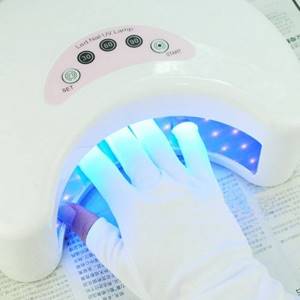
What you need to know about the dangers of using nail dryers:
- Frequent use of any procedure can harm the body;
- fixed time and local exposure to a small area of skin minimizes possible harmful effects;
- the harm from a lamp for drying nails has not been proven, but is only a hypothesis, the correctness of which everyone assesses for himself;
- if you maintain a certain interval and do not overexpose your nails under the dryer, and also use special gloves, the harm from exposure to UV rays is practically reduced to nothing;
- LED lamps are less harmful due to their low light intensity.
How long can you stay under the lamp?
To disinfect the room, the device is turned on for approximately 15-30 minutes. Even if it is a harmless ultraviolet lamp, it is better to leave the room while it is working and take plants and animals with you. Upon completion of the procedure, the room must be checked. If a child has signs of acute respiratory infections, the doctor may prescribe treatment with ultraviolet rays.

Fig. 9 – Lamp for treatment “Sun”.
To do this, the child is put on special glasses, seated or placed on a couch (10 centimeters from the device) and the procedure is carried out. It lasts no more than 10 minutes. The general course of treatment is 3-4 days. After 3 sessions, cold symptoms should disappear. When treating the nasal mucosa, it can be irradiated only after the amount of discharge has decreased. Depending on the intensity of symptoms, the daily radiation dose can be reduced to 3 minutes, then to 1.
Equipment and its characteristics
A UV lamp is used to polymerize the gel when creating a nail coating. It is also used for extensions. The time during which the gel needs to be dried depends on the quality of the equipment (its power).

How long should you keep gel polish on (minutes) in a 9-watt lamp? The total time that will be spent “under the lamp” is 6 minutes. A 9 W lamp is the cheapest device with low power, so the drying time of the coating with such a device is quite long. The option with more power will be more expensive. If you don’t plan to cover your nails with gel very often, then you don’t have to spend money on a more powerful “unit”. Or you can choose a “partner” that is a little more powerful, say, 18 W.
For manicure at home, the best option is with an 18-watt lamp; the coating “hardens” in 2 minutes.
If the manicure “device” is of high quality, then it has sufficient drying power. In the case of a power of 36 W, the base will “harden” in 1 minute, and the remaining layers will have to spend 2 minutes each. The ideal device for manicure is designed for 36 W.
Is it possible to dry gel polish in a 9-watt lamp of Chinese origin? Yes, the estimated time for drying the coating will be 60 seconds (per layer). The market also offers hybrid samples of manicure equipment that perform drying with several types of rays.
It is important to note that an LED lamp is an expensive product that is used for expensive coatings. This Ice coating is of high quality, but it also costs a lot.
If you use regular gels for manicure, then there is no need to use an Ice lamp, since drying can be done using a UV “unit”, without the high costs of purchasing an Ice model and a hybrid. Therefore, the question of how long to dry gel polish in an Ice lamp 9 watts, 36 watts immediately disappears.
Advantages and disadvantages
Among the advantages of ultraviolet bactericidal lamps, several main ones can be distinguished:
- due to their diversity, the devices can be used in different fields of activity, as well as in everyday life;
- most models last a long time at a low price;
- devices almost instantly reach operating radiation power levels;
- modern recirculators are safe for health; they can be turned on without leaving the room.
Disadvantages include the release of ozone into the air. If you do not follow safety rules, you can harm yourself. In addition, lamps should not be simply thrown away with the rest of the trash. To do this, they are taken to specialized reception points. Also, do not forget that you need to constantly monitor the correct operation of the lamp, gradually it will begin to lose its properties.
Video: Are you sure that you have chosen the right UV lamp for your animal?
Reviews
Svetlana. I have been using a drying lamp for a long time; during this time I have changed several models; for myself, I decided to buy only one with an electronic timer and a sound signal to ensure the best result.
Dasha bought her first UV lamp at a sale, without even really exploring the possibilities. I thought that I would dry regular nail polish this way. It turned out that it was not intended for simple varnish, I had to buy a special one (it was interesting), I gradually mastered the skills of doing the coating myself. After I decided to get involved professionally, I had to take courses and buy a new lamp, more powerful and more versatile (this time I went to choose it with full knowledge of the matter).
Modern ultraviolet nail dryers will greatly facilitate the process of creating the perfect manicure and give the coating additional durability and strength. The use of special varnishes and gels will help bring any idea to life, as well as create your own unique design. By choosing the right device from the entire variety of models, you can not only provide yourself and your loved ones with comfortable drying in the shortest possible time, but will also give you the opportunity to additionally engage in your own nail extension business, which is popular today. You can find out what you need to cover your nails with gel polish in this material.
Life time
On average, bactericidal lamps last 8000-9000 hours. It depends on their purpose and design. The service life depends on whether the emitter overheats during operation or not.
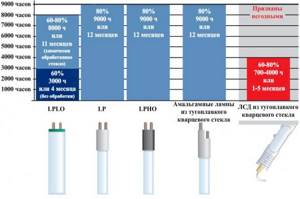
Fig. 10 – service life of UV irradiators.
During operation, the lamp gradually wears out. This is reflected in the radiation spectrum, so over time its properties will begin to change. If deviations in the operation of the device are noticed, it is better to replace it with a new one.
Which LED lamp to choose
When we settled on diodes, we need to find out which LED dryer is better. For more efficient drying, it is better to purchase a device with reflectors. Let's look at some brands that have proven themselves in use.
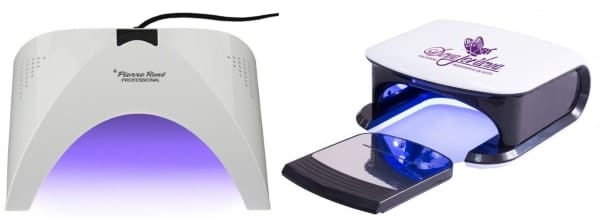
OPI LED light – modern professional dryers. There is an automatic shutdown. Long service life, fast drying speed of varnish.
Gelish C is stylish, professional equipment. Power 18 Watt. Timer, automatic shut-off, reflectors.
Art Nail – power 12 Watt. Minimum dimensions, long service life.
ORLY SmartGels are professional low-power devices with controls located on the lid.
Planet Nails Big Heart has a minimum of functions, low power, and a reflector. Suitable for home use.
PIERRE RENE LAMPA LED – compact size, high radiation intensity. A professional model, loved by nail technicians, but also suitable for home use.
Dona Jerdona LED lamp is a professional, stylish model.
Please rate the article. We tried our best:)
Did you like the article? Tell us about her! You will help us a lot :)
